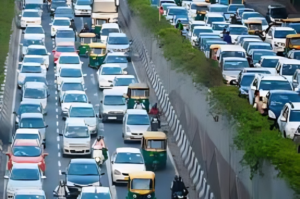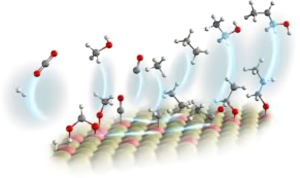India’s Ethanol Blend Mileage Reality Hits the Roads
The Indian government recently acknowledged that ethanol-blended petrol delivers lower mileage than pure petrol. This admission is a big shift for India’s energy future and everyday drivers. Consumers who expected the same distance per litre now face a new reality on highways and city streets.
Introduction
Ethanol blending, long hailed as a green alternative, is now under fresh scrutiny. Originally promoted to cut emissions and boost farm incomes, ethanol blend targets have steadily risen—10% blend (E10) is nationwide, with plans for E20 soon. Yet, the fuel economy gap between E10 and regular fuel has surprised many motorists.
Background and Context
When India set its blending goals, the idea was simple: mix ethanol derived from sugarcane molasses into petrol. This move aimed to:
- Reduce crude oil imports
- Support sugarcane farmers with new demand
- Lower carbon footprint on busy roads
Early tests suggested minor mileage loss, but real-world figures varied by driving style, vehicle type, and region.
Government’s Mileage Admission
In a statement on August 5, 2025, the Ministry of Petroleum confirmed that E10 users can expect about 3–5% lower fuel economy compared to pure petrol. This concession contrasts earlier claims that mileage impact would be negligible. The ministry cited:
- Fuel Energy Density – Ethanol carries less energy per litre than petrol.
- Engine Calibration – Older engines not optimized for ethanol blends suffer efficiency drops.
- Driving Conditions – Stop-and-go city traffic amplifies the mileage gap.
Real-Life Example
Rahul, a daily commuter in Mumbai, clocked 15 km/l on standard petrol but saw just 14 km/l after switching to E10. Over a month, his fuel cost rose by ₹300, despite ethanol’s lower per-litre price. Stories like Rahul’s are becoming common in metro cities.
Key Pros and Cons of Ethanol Blending
Pros
- Price Relief: Ethanol often costs ₹5–₹10 less per litre than petrol.
- Cleaner Emissions: CO₂ output drops by up to 20%.
- Rural Boost: Sugarcane growers get stable demand.
Cons
- Lower Mileage: 3–5% efficiency loss hurts long-distance drivers.
- Infrastructure Strain: Petrol pumps need special equipment to handle ethanol.
- Corrosion Risks: Older fuel lines and seals can degrade faster.

Impact on Consumers
For budget-conscious drivers, the net saving depends on travel habits:
- City Drivers: Frequent idling magnifies mileage loss, reducing benefits.
- Highway Cruisers: Steady speeds mitigate efficiency drops, making ethanol blends more attractive.
Insurance and resale values may also shift as buyers factor in long-term running costs.
Environmental Considerations
While lower mileage means more frequent fill-ups, ethanol’s cleaner burn still cuts particulate emissions. Studies show:
- Urban Air Quality improves with reduced carbon monoxide and hydrocarbons.
- Lifecycle Emissions – From crop to fuel, ethanol has a smaller net carbon footprint than fossil petrol.
Yet, water usage in sugarcane cultivation and land-use changes remain environmental challenges.

Stakeholder Reactions
- Farmers: Welcome the stable demand and government support schemes.
- Oil Companies: Investing in retrofitting pumps and blending tanks.
- Automakers: Calibrating new engines for E20 compatibility and advising customers on mileage expectations.
Consumer forums are buzzing with tips on maximizing E10 mileage—tire pressure checks, smooth acceleration, and regular engine servicing.
Future Outlook
India plans to roll out E20 by 2027. To smooth the transition:
- Public Awareness: Campaigns explaining mileage expectations and eco-benefits.
- Technical Upgrades: Encouraging service centres to offer ethanol-optimized maintenance.
- Pricing Policies: Adjusting excise duties to keep ethanol blends price-competitive despite efficiency losses.
Conclusion
The government’s admission of lower mileage in ethanol-blended fuel marks a realistic turn in India’s green energy journey. Drivers must weigh cost savings against a slight drop in kilometres per litre. With careful driving habits and ongoing technical support, ethanol blending can still deliver on its promise of cleaner roads and stronger rural economies.